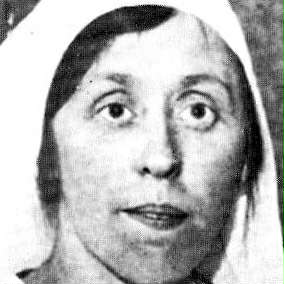
1899 - 1936
Dorothea Nancy Waddingham
Summary
Name:
Dorothea Nancy WaddinghamNickname:
Nurse WaddinghamYears Active:
1935Birth:
June 21, 1899Status:
ExecutedClass:
MurdererVictims:
2Method:
PoisoningDeath:
April 16, 1936Nationality:
United Kingdom
1899 - 1936
Dorothea Nancy Waddingham
Summary: Murderer
Name:
Dorothea Nancy WaddinghamNickname:
Nurse WaddinghamStatus:
ExecutedVictims:
2Method:
PoisoningNationality:
United KingdomBirth:
June 21, 1899Death:
April 16, 1936Years Active:
1935Date Convicted:
February 27, 1936bio
Dorothea Nancy Merelina Allan Chandler, later known as Dorothea Waddingham, was born around 1899 near Nottingham, England. She was the illegitimate daughter of a local couple who married a year after her birth, giving her the surname Waddingham from her father. Raised on a small farm, her early life was humble, and she received little formal education. Despite later being referred to as “Nurse Waddingham,” she had no nursing qualifications. Her only medical experience came from working as a ward maid at an infirmary near Burton-on-Trent.
In 1925, under the name Dorothea Nancy Waddingham, she married Thomas Willoughby Leech, a man twice her age who was dying of cancer. During their marriage, she served two separate prison terms for fraud and theft. The couple had three children before Leech’s death in 1933.
After his death, Dorothea began a relationship with Ronald Joseph Sullivan, a decorated World War I veteran and recipient of the Military Medal for gallantry. Although they never formally married, they had two children together, bringing her total to five. Together, they converted their residence at 32 Devon Drive, Nottingham, into a small private nursing home, taking in elderly and infirm patients.
Her operation was approved by Mrs. Blagg, the Honorary Secretary of the County Nursing Association, and initially appeared legitimate. However, Waddingham’s lack of medical training, questionable ethics, and personal financial struggles set the stage for one of England’s most notorious poison murder cases of the 1930s.
murder story
Dorothea Waddingham ran a nursing home in Nottingham where two of her patients, Mrs. Louisa Baguley and her daughter Ada, became her focus. Ada Baguley had a history of health issues and had changed her will to leave her estate to Waddingham and her partner, Ronald Sullivan. Shortly after this new will was drawn up, Mrs. Baguley died in May 1935.
Ada continued to live until September, when she was reported to be in a coma. The next day, a doctor found her dead. The doctor did not suspect foul play based on Waddingham's details. Waddingham claimed that Ada's death was due to cardiovascular degeneration. However, Ada had instructed that she be cremated, which required two doctors to sign the death certificate. Waddingham misled the situation, saying there were no relatives to notify.
Cyril Banks, the Medical Officer for Health, became suspicious of Waddingham’s nursing home and ordered a post-mortem for Ada. The autopsy revealed high levels of morphine in Ada's body. The investigation then led to the exhumation of Mrs. Baguley's body, revealing that she also had died from morphine poisoning. This caused authorities to suspect Waddingham and Sullivan, eventually leading to their arrest.
Waddingham's trial began in early February 1936. During the trial, damaging evidence was presented, including details about Ada's last meal, which was inappropriate for her health condition. Waddingham was found guilty of the murders of both women on February 27, 1936. Sullivan was discharged due to insufficient evidence against him.
Despite pleas for mercy due to her being a mother of five, Waddingham was sentenced to death. She confessed to her crimes shortly before her execution. On April 16, 1936, she was hanged at Winson Green Prison. At the time, ten thousand people protested outside the prison against her execution, emphasizing public concern for her as a mother.